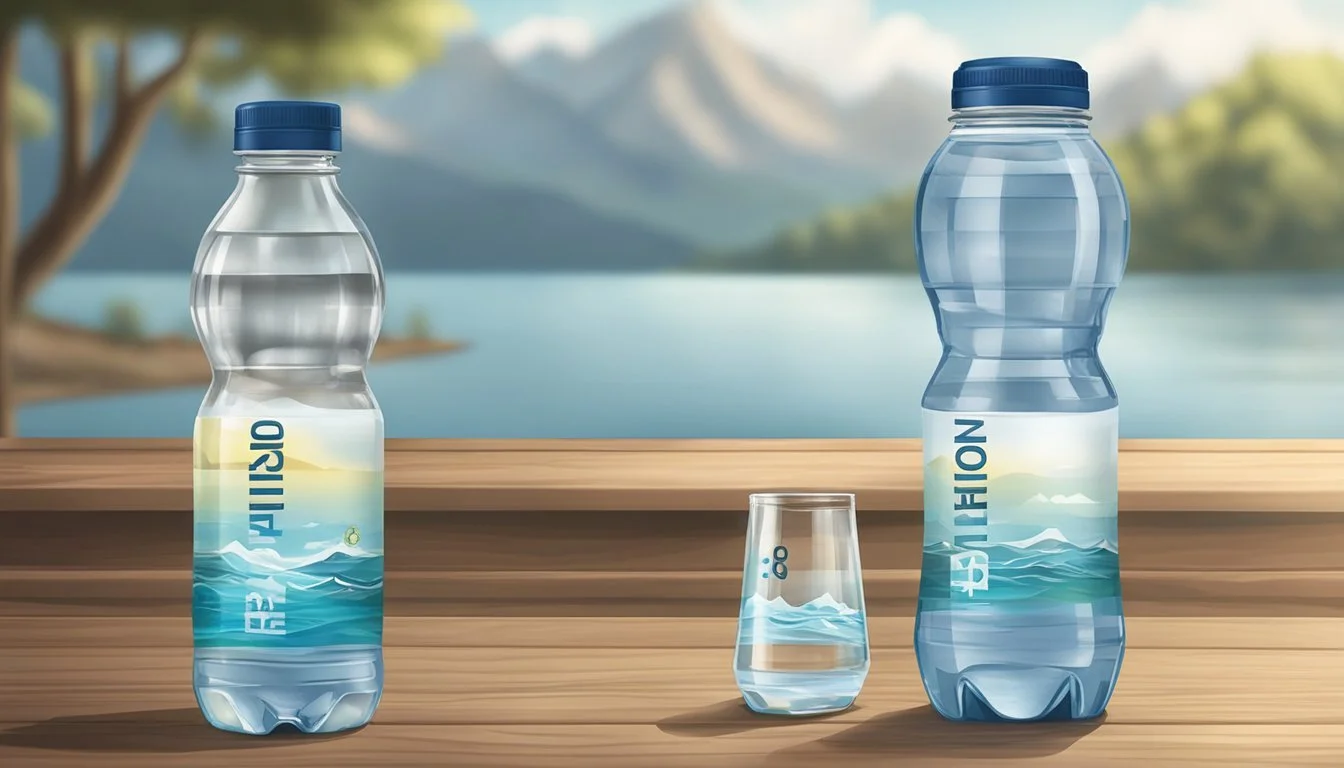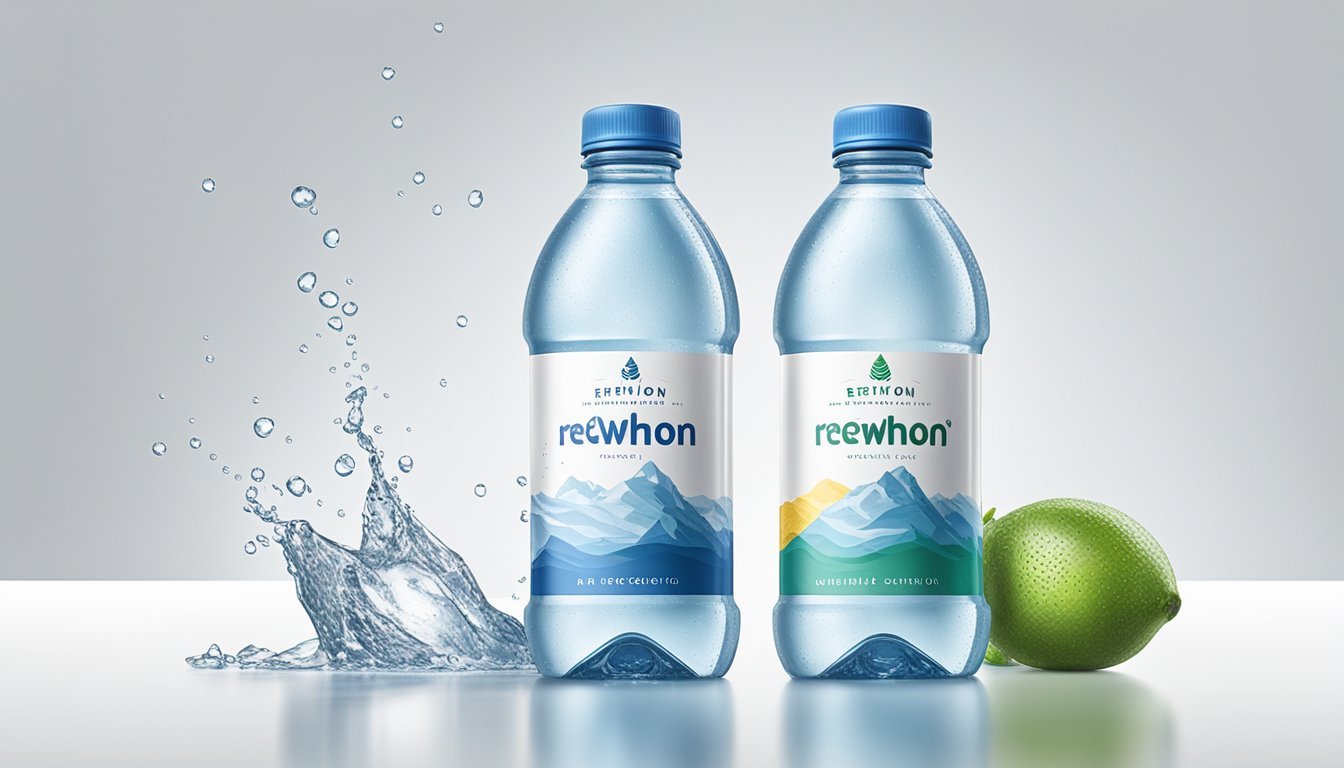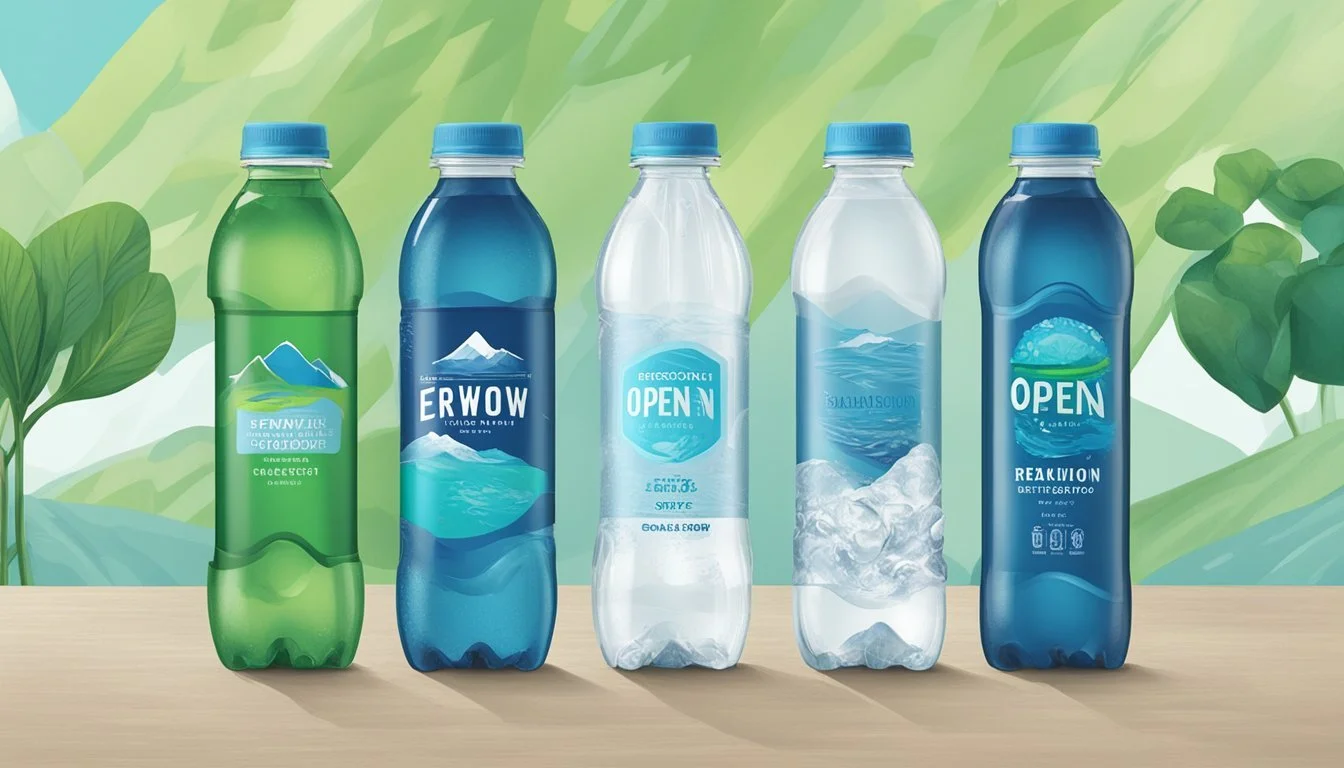Erewhon vs. Open Water
Comparing the Best Bottled Water Brands
When it comes to choosing the best bottled water, Erewhon and Open Water are two brands that often come up for comparison. Open Water impresses with its eco-friendly packaging and crisp taste, making it a favorite for those prioritizing sustainability. On the other hand, Erewhon is known for its luxurious price points and premium quality offerings, with some bottles flying off the shelves for as much as $25.99.
Erewhon prides itself on its natural spring water options, providing a taste that's been praised for its light and clean profile. For consumers who are willing to splurge, Erewhon offers a high-end experience that is unmatched by more common brands. Open Water, although not as extravagant, delivers a reliable and pure drinking experience, free from the tang or plastic taste sometimes associated with bottled water.
For individuals keen on balancing quality and environmental impact, Open Water stands out. Its packaging is designed to be recyclable, aiming to reduce the plastic waste typically found in bottled water production. Erewhon, while offering an unparalleled taste, caters to those who view water as a premium product worth the investment.
The Importance of Water Quality
Water quality is fundamental to health and safety, affecting everything from hydration to disease prevention. Understanding regulations and potential health impacts of contaminants is crucial.
Assessing Water Safety Standards
Water safety standards primarily aim to ensure that water is free from harmful contaminants. In the U.S., the Environmental Protection Agency (EPA) sets the standards for tap water through the Safe Drinking Water Act. Bottled water, regulated by the Food and Drug Administration (FDA), must also meet these strict guidelines.
Certain chemicals, like PFAS (Per- and polyfluoroalkyl substances), also known as "forever chemicals," are subject to stringent monitoring. Compliance with these standards ensures that water is safe from microorganisms, heavy metals such as lead, and other potentially harmful substances.
State-level regulations often add an extra layer of assurance. Regular testing and transparency in water quality reports allow consumers to make informed choices. Ensuring adherence to these safety regulations protects public health and boosts confidence in both tap and bottled water sources.
Health Impact of Contaminants
Contaminants in water pose significant health risks. High levels of nitrates and lead can cause serious health issues, including cancer and developmental problems in children. Bacteria and other microorganisms may lead to gastrointestinal infections and other illnesses.
The presence of PFAS in drinking water is concerning due to their potential links to cancer and other health conditions. Effective filtration methods are essential to reduce exposure to these and other harmful chemicals.
Safe drinking water significantly reduces the risk of disease. Adopting high-quality standards and continuous monitoring can mitigate the adverse health effects of contaminated water. Prioritizing clean, contaminant-free water is fundamental to maintaining good health and overall well-being, highlighting the importance of rigorous safety standards and ongoing oversight.
Bottled Water vs. Tap Water
Choosing between bottled water and tap water involves weighing environmental impacts and cost differences. Both options can provide adequate hydration, but there are significant distinctions worth considering.
Environmental Considerations
Bottled water often comes in plastic containers, contributing to waste and pollution. Plastic production and disposal have adverse effects on the environment. Glass bottles are a more sustainable alternative but come at a higher cost.
Tap water, delivered through existing municipal water systems, is a more environmentally friendly option. Using a reusable water bottle or a Brita pitcher can drastically reduce plastic waste. Tap water has much lower environmental overhead as it doesn't require bottling, transportation, or plastic packaging.
Cost Implications
Tap water is significantly cheaper, often costing just pennies per gallon. Households pay a regular water bill, making tap water practically "free" for daily hydration needs. Investing in a Brita pitcher or similar filtration system can enhance taste and safety at a low cost.
Bottled water, on the other hand, can cost up to 2,000 times more than tap water. The cumulative expense of purchasing bottled water can be substantial. Additionally, opting for glass bottles might increase the price further, even though they are more environmentally friendly.
Evaluating Bottled Water Brands
Comparing Erewhon and Open Water reveals distinct differences in taste, quality, and environmental sustainability. Other leading brands such as Mountain Valley and Fiji offer unique attributes worth discussing.
Comparison of Erewhon and Open Water
Erewhon, known for its clean and crisp taste, is sourced from pristine locations and undergoes rigorous testing. Open Water stands out for its sustainable packaging, using recyclable aluminum cans.
Erewhon:
Taste: Velvety texture
Source: Natural springs
Testing: Strict contaminant checks
Open Water:
Taste: Neutral, suitable for drinking with meals
Source: Multiple sources, including municipal
Packaging: Eco-friendly aluminum cans
Analysis of Other Leading Brands
Mountain Valley: Recognized for its spring water sourced from Arkansas, it offers a subtle sweetness and a velvety texture.
Fiji, Icelandic Glacial, and Evian: These brands are often lauded for their mineral content and luxurious branding. Fiji's water comes from an artesian aquifer, while Icelandic Glacial offers low mineral content. Evian is sourced in the French Alps.
Smartwater, Dasani, and Aquafina: These brands are purified through reverse osmosis. Smartwater adds electrolytes for better taste, while Dasani and Aquafina are known for their widespread availability.
San Pellegrino and Poland Spring: San Pellegrino is a popular sparkling water with a distinct mineral flavor, while Poland Spring hails from Maine, known for its reliable quality.
Sustainability Efforts: Both Boxed Water and Open Water focus on eco-friendly packaging. Boxed Water uses recyclable cartons, aiming to reduce plastic waste.
By evaluating these factors, consumers can make informed choices about their bottled water preferences based on taste, source, and environmental impact.
Health and Nutritional Aspects of Bottled Water
When evaluating Erewhon and Open Water, it is crucial to consider their health and nutritional aspects. This includes examining the mineral content and the pH levels, as both factors significantly impact the water’s benefits.
Mineral Content and Health Benefits
Mineral content in bottled water can include calcium, magnesium, potassium, and sodium. These minerals are essential for maintaining good health.
Calcium supports bone health and muscle function.
Magnesium is crucial for nerve and muscle function.
Potassium helps regulate fluid balance and nerve signals.
Sodium maintains fluid balance but too much can lead to high blood pressure.
For example, mineral water sources may provide varying levels of these electrolytes, contributing to differences in taste and health benefits. Consumers looking for nutrient-enriched water might prefer brands that list higher mineral content.
The Role of pH in Bottled Water
The pH level of bottled water can influence its taste and potential health benefits.
Alkaline water, with a pH higher than 7, is often marketed for its ability to neutralize acidity.
Acidic water (pH lower than 7) might be less favorable due to potential negative health effects.
Water with a balanced pH closer to 7 is generally more neutral and preferable for regular consumption.
Assessing the pH can help consumers choose the best option for their diet and health needs, avoiding extremes that might disrupt the body’s pH balance. Alkaline water, while popular, should be chosen carefully, especially by those with specific health conditions.
Packaging and Sustainability
Both Erewhon and Open Water focus on environmentally friendly packaging solutions to minimize their environmental impact. They adopt various materials and strategies to reduce plastic use and enhance sustainability.
Plastic Use and Alternatives
Erewhon sells Cove's biodegradable water bottles made from PHA, a bio-based plastic. This material fully degrades when composted, making it a more sustainable option. Open Water, meanwhile, uses aluminum cans for their water. Aluminum is infinitely recyclable, promoting frequent reuse and reducing the need for new materials.
Plastic remains a concern in the water bottle industry due to its environmental impact. These alternatives by Erewhon and Open Water are crucial steps towards reducing plastic waste. Instead of using traditional plastic bottles, they incorporate PHA and aluminum to offer more sustainable solutions.
Environmental Impact of Water Bottles
Traditional plastic water bottles contribute significantly to environmental pollution, taking hundreds of years to decompose. They account for a large portion of marine litter, affecting wildlife and ecosystems. In contrast, Erewhon's PHA bottles and Open Water's aluminum cans greatly lessen this environmental burden.
Erewhon's PHA bottles decompose naturally, consumed by various microorganisms. Open Water’s aluminum packaging supports a closed-loop recycling system, drastically cutting down on waste. These initiatives not only reduce pollution but also promote a more circular economy, encouraging consumers to opt for reusable or more recyclable options. Tentoencourage a move away from single-use plastics to sustainable alternatives.
Consumer Information and Accessibility
Consumers often prioritize both the ease of finding a product and the transparency of the company's practices when choosing bottled water.
Bottled Water Availability
Erewhon and Open Water are available at many popular grocery stores, including Whole Foods and Trader Joe's. Erewhon's product distribution focuses on organic markets and specialty stores, emphasizing a premium brand presence. Open Water, known for promoting sustainability, can also be found at similar outlets and select mainstream retailers.
Online availability is another crucial aspect. Both brands have robust e-commerce options, allowing customers to order via their official websites. They also maintain active social media profiles on platforms like Twitter, providing product updates and promotions. This broad availability ensures that consumers have multiple avenues to purchase their preferred water brand.
Product Transparency and Consumer Education
Both Erewhon and Open Water prioritize transparency and consumer education. Erewhon frequently collaborates with water sommeliers to provide detailed information about the source and quality of their water. Their labels typically include comprehensive details about mineral content and sourcing, allowing consumers to make informed choices.
Open Water goes a step further by offering detailed sustainability reports available in PDF format on their website. They actively engage with their customer base through email newsletters and social media, educating consumers on the environmental impact of their products. This commitment to transparency helps build trust and fosters an informed consumer base.
Cultural and Social Factors
Consumer choices in bottled water are influenced by various cultural and social dynamics, including marketing strategies and consumer perceptions.
Marketing and Consumer Perception
Bottled water brands such as Erewhon and Open Water capitalize on marketing to create a unique identity. Erewhon places an emphasis on luxury and exclusivity, often featuring high-priced items, like their $25.99 water bottle. In contrast, Open Water markets itself as eco-friendly and sustainable.
Marketing plays a crucial role in shaping consumer perceptions. Celebrities and influencers in Los Angeles frequently promote premium brands, boosting their status. The International Bottled Water Association supports these brands by emphasizing quality and safety standards, leading to consumer trust in bottled water over tap water.
Consumers often believe bottled water is purer and better-tasting than tap water, even though this perception is not always backed by scientific evidence. The ongoing distrust in public tap water, shaped by past water quality incidents, further drives the popularity of bottled water.
Conclusion
Erewhon and Open Water both offer unique benefits, showcasing their respective strengths in hydration, quality, and sustainability compared to traditional bottled water options.
The Future of Bottled Water Consumption
As consumers grow more health-conscious, the demand for high-quality hydration options is increasing. Erewhon has garnered a reputation for premium quality and taste, making it a favored choice among those seeking superior water options. It's particularly popular among individuals with specific dietary preferences.
Open Water, on the other hand, excels in sustainability. Its aluminum packaging reduces environmental impact, appealing to eco-conscious consumers. Though slightly more expensive than conventional bottled waters, its commitment to reducing plastic waste resonates strongly.
Health considerations also play a significant role. Both brands have strict quality controls, ensuring the water is free of contaminants. This dedication to purity can make a significant difference in overall wellness.
Their efforts could lead to broader adoption, impacting bottling practices and consumer choices, fostering better habits around water consumption. Comparing both, each brand shines in different aspects, catering to diverse consumer needs.
More About Erewhon
Erewhon vs Kirkland Signature: Which Bottled Water is Better?
Erewhon vs Richard's Rainwater: Which Bottled Water is Better?
Erewhon vs Whole Foods Italian Still Mineral water: Which Bottled Water is Better?
Icelandic Glacial vs Erewhon: Which Bottled Water is Better?
Mountain Valley Spring Water vs Erewhon: Which Bottled Water is Better?
More About Open Water
Aqua Carpatica vs Open Water: Which Bottled Water is Better?
Cascade Mountain vs Open Water: Which Bottled Water is Better?
Core Hydration vs Open Water: Which Bottled Water is Better?
Crystal Geyser vs Open Water: Which Bottled Water is Better?
Hawaii Volcanic vs Open Water: Which Bottled Water is Better?
Hawaiian Springs vs Open Water: Which Bottled Water is Better?
Icelandic Glacial vs Open Water: Which Bottled Water is Better?
Mountain Valley Spring Water vs Open Water: Which Bottled Water is Better?
Nestle Pure Life vs Open Water: Which Bottled Water is Better?
Open Water vs Kirkland Signature: Which Bottled Water is Better?
Open Water vs Whole Foods 365: Which Bottled Water is Better?
Richard's Rainwater vs Open Water: Which Bottled Water is Better?
San Pellegrino vs Open Water: Which Bottled Water is Better?
Solan de Cabras vs Open Water: Which Bottled Water is Better?
Talking Rain AQA vs Open Water: Which Bottled Water is Better?
Whole Foods Italian Still Mineral water vs Open Water: Which Bottled Water is Better?






